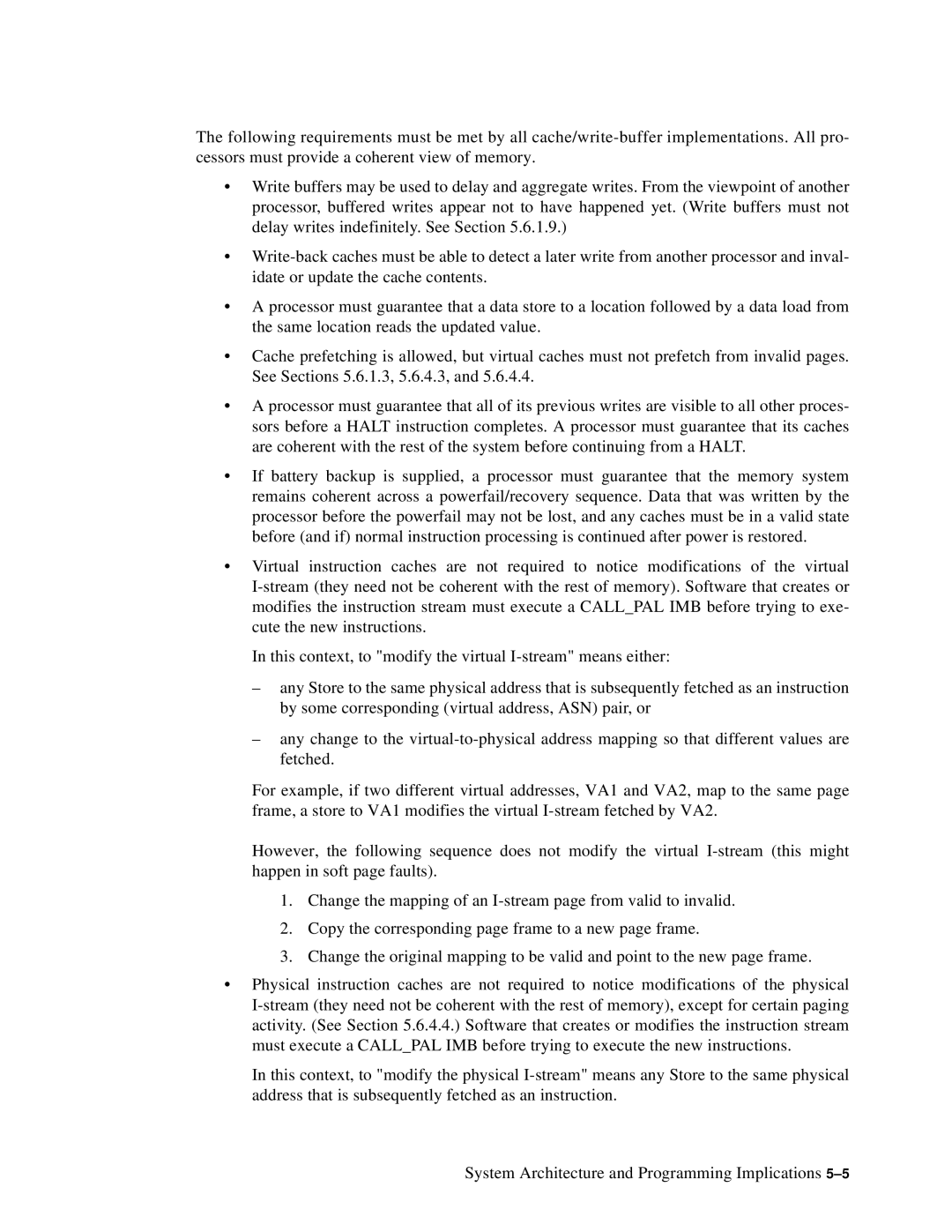The following requirements must be met by all
•Write buffers may be used to delay and aggregate writes. From the viewpoint of another processor, buffered writes appear not to have happened yet. (Write buffers must not delay writes indefinitely. See Section 5.6.1.9.)
•
•A processor must guarantee that a data store to a location followed by a data load from the same location reads the updated value.
•Cache prefetching is allowed, but virtual caches must not prefetch from invalid pages. See Sections 5.6.1.3, 5.6.4.3, and 5.6.4.4.
•A processor must guarantee that all of its previous writes are visible to all other proces- sors before a HALT instruction completes. A processor must guarantee that its caches are coherent with the rest of the system before continuing from a HALT.
•If battery backup is supplied, a processor must guarantee that the memory system remains coherent across a powerfail/recovery sequence. Data that was written by the processor before the powerfail may not be lost, and any caches must be in a valid state before (and if) normal instruction processing is continued after power is restored.
•Virtual instruction caches are not required to notice modifications of the virtual
In this context, to "modify the virtual
–any Store to the same physical address that is subsequently fetched as an instruction by some corresponding (virtual address, ASN) pair, or
–any change to the
For example, if two different virtual addresses, VA1 and VA2, map to the same page frame, a store to VA1 modifies the virtual
However, the following sequence does not modify the virtual
1.Change the mapping of an
2.Copy the corresponding page frame to a new page frame.
3.Change the original mapping to be valid and point to the new page frame.
•Physical instruction caches are not required to notice modifications of the physical
In this context, to "modify the physical
System Architecture and Programming Implications
